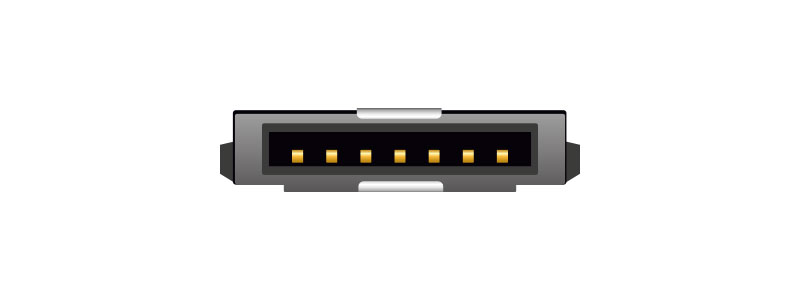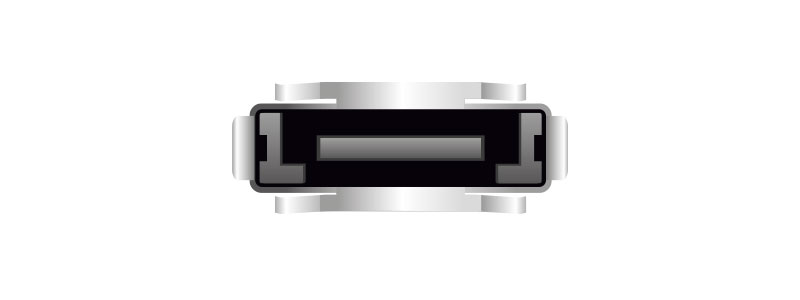In this article:
- What are eSATA connectors?
- What type of cable is used with eSATA connectors?
- What are the characteristics of eSATA cables?
- What are the common types of eSATA cables?
- What are the typical lengths for eSATA cables?
- What are the supported data transfer rates for eSATA connectors?
- What are the benefits of using eSATA connectors and cables?
- How do eSATA connectors compare to other external storage interfaces?
- Can I convert an internal SATA port to an external eSATA port?
- What should I consider when selecting an eSATA cable?
- Are eSATA connectors still widely used?
- Can eSATA be used for other types of data transfer besides storage?
- What are the limitations of eSATA connectors?
- How do I ensure optimal performance with eSATA connections?
What are eSATA connectors?
eSATA (External Serial ATA) connectors are used to connect external storage devices, such as hard drives and solid-state drives (SSDs), to a computer or other host device. They provide a high-speed interface for transferring data between the external storage device and the host system.


FEMALE MALE
What type of cable is used with eSATA connectors?
The typical cable used with eSATA connectors is an eSATA cable, specifically designed for connecting external storage devices to eSATA ports on computers or other compatible devices.
What are the characteristics of eSATA cables?
eSATA cables typically feature eSATA connectors on each end, which are similar in appearance to internal SATA connectors but have additional shielding and a locking mechanism to ensure a secure connection. The cable is usually shielded to minimise electromagnetic interference and maintain signal integrity over longer cable runs.
What are the common types of eSATA cables?
Common types of eSATA cables include:
- Straight eSATA Cable: Features eSATA connectors on both ends, used for directly connecting external storage devices to eSATA ports.
- eSATA to SATA Cable: Has an eSATA connector on one end and a standard internal SATA connector on the other, allowing internal SATA ports to be used as external eSATA ports.
- eSATA Extension Cable: Features eSATA connectors on both ends, used to extend the reach of an existing eSATA cable.
- eSATA Power Cable: Combines an eSATA connector for data and a separate power connector for providing power to external storage devices that require it.
- eSATA Combo Cable: Combines an eSATA connector with another type of connector, such as USB or FireWire, providing flexibility and compatibility with different systems.
What are the typical lengths for eSATA cables?
eSATA cables are generally used for relatively short distances, typically ranging from a few inches to several feet. Longer cable runs can be achieved with the use of eSATA extension cables or eSATA repeaters, which help maintain signal quality over longer distances.
What are the supported data transfer rates for eSATA connectors?
eSATA connectors support high-speed data transfer rates, typically up to 6 Gbps (SATA III) or higher, depending on the specific implementation and hardware compatibility.
What are the benefits of using eSATA connectors and cables?
The benefits of using eSATA connectors and cables include:
- High-speed data transfer rates
- Reliable performance for external storage applications
- Secure and stable connections with additional shielding
- Compatibility with various external storage devices
How do eSATA connectors compare to other external storage interfaces?
eSATA connectors offer several advantages over other external storage interfaces such as USB or FireWire, including:
- Higher data transfer rates, especially compared to older versions of USB
- Direct connection to the SATA bus, providing lower latency and overhead
- Dedicated bandwidth without sharing with other devices (unlike USB hubs)
However, eSATA lacks the power delivery capability of USB, which means that external storage devices typically require a separate power source.
Can I convert an internal SATA port to an external eSATA port?
Yes, you can convert an internal SATA port to an external eSATA port using an eSATA to SATA cable. This allows you to utilise spare internal SATA ports for connecting external storage devices.
What should I consider when selecting an eSATA cable?
When selecting an eSATA cable, consider the following factors:
- The specific devices being connected
- The distance between the devices
- Additional requirements such as power delivery
- Cable quality and shielding to ensure reliable performance
Are eSATA connectors still widely used?
While eSATA connectors were popular for high-speed external storage connections, their use has declined with the rise of USB 3.0/3.1 and Thunderbolt interfaces, which offer comparable or superior speeds with added convenience and power delivery capabilities.
Can eSATA be used for other types of data transfer besides storage?
eSATA is specifically designed for high-speed data transfer between external storage devices and host systems. It is not typically used for other types of data transfer, such as networking or display interfaces.
What are the limitations of eSATA connectors?
The limitations of eSATA connectors include:
- Lack of power delivery, requiring external storage devices to have a separate power source
- Limited to storage device connections
- Declining usage with the advent of faster and more versatile interfaces like USB 3.0/3.1 and Thunderbolt
How do I ensure optimal performance with eSATA connections?
To ensure optimal performance with eSATA connections:
- Use high-quality, shielded cables
- Keep cable runs as short as possible to minimize signal loss
- Ensure secure connections with the locking mechanism
- Verify that both the host system and the external storage device support the desired data transfer rate (e.g., SATA III for 6 Gbps)
By following these guidelines, you can achieve reliable and high-speed data transfer between your external storage devices and host systems using eSATA connectors.